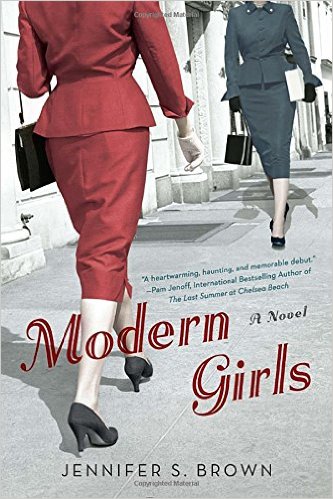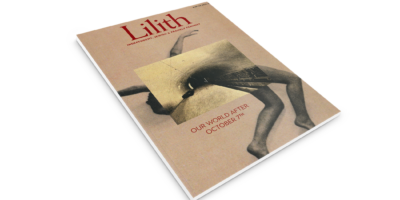
Jennifer S. Brown, Author of “Modern Girls,” Talks Mother-Daughter Drama and Choosing Abortion in the 1930s
 Dottie’s got a great job in Manhattan. She blows her salary on the latest fashions, escapes to the country with her friends when the city is stifling, and is in love with her boyfriend of three years. Her mother’s a stay-at-home, spends her life pushing her kids to make the most of theirs and dreams of her young political days when life used to mean so much more.
Dottie’s got a great job in Manhattan. She blows her salary on the latest fashions, escapes to the country with her friends when the city is stifling, and is in love with her boyfriend of three years. Her mother’s a stay-at-home, spends her life pushing her kids to make the most of theirs and dreams of her young political days when life used to mean so much more.
It’s a timeless story—could be happening right now. Only it’s happening in 1935. And Dottie’s pregnant. And so is her mom. And neither is very happy about it.
Jennifer S. Brown’s debut novel, Modern Girls (NAL/Penguin, April 5, 2016), handles timeless issues of women’s choices, setting it for added drama in the Jewish world of the Lower East Side before World War II. Lilith sat down with the author to talk about mother-daughter drama, having it all, and what makes a Modern Girl.
HRN: This story has some classic relationship drama—mother-daughter dynamics, lovers who can’t commit. Why set it in Lower East Side, New York in 1935? What was the inspiration?
JSB: When I was pregnant with my first child, I went through the genetic testing common for Ashkenazi Jewish women. I asked my father for our family’s medical history, and I was shocked when he told me, “My grandmother had uterine cancer. They thought it was because of that botched abortion, but I’m pretty sure abortions don’t cause cancer.” I started turning the idea over in my mind, playing with it. Why would a married woman during the Depression not want a child? How are her issues different from an unmarried woman? Starting from there, the novel began to take shape.




One comment on “Jennifer S. Brown, Author of “Modern Girls,” Talks Mother-Daughter Drama and Choosing Abortion in the 1930s”
Comments are closed.